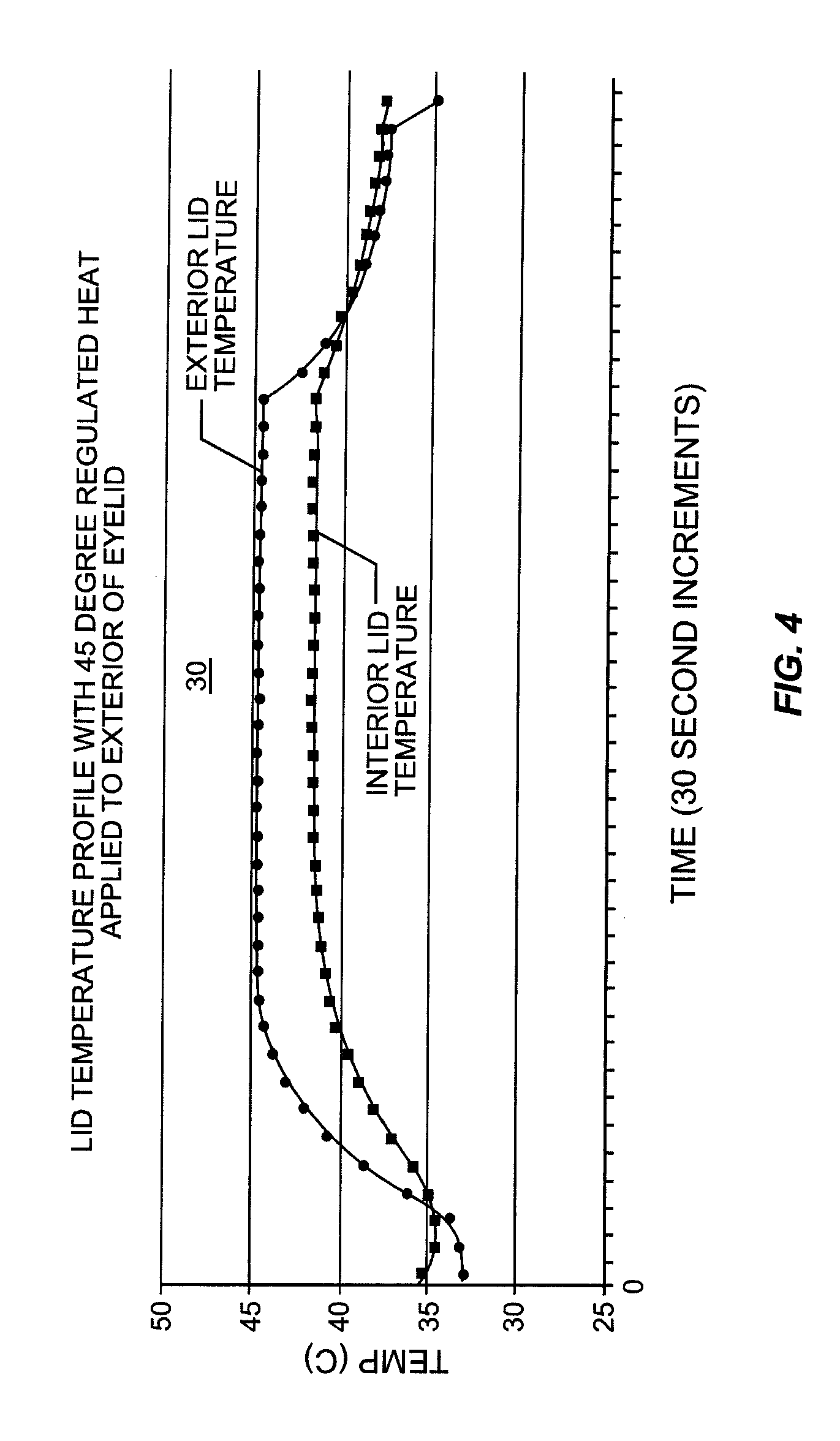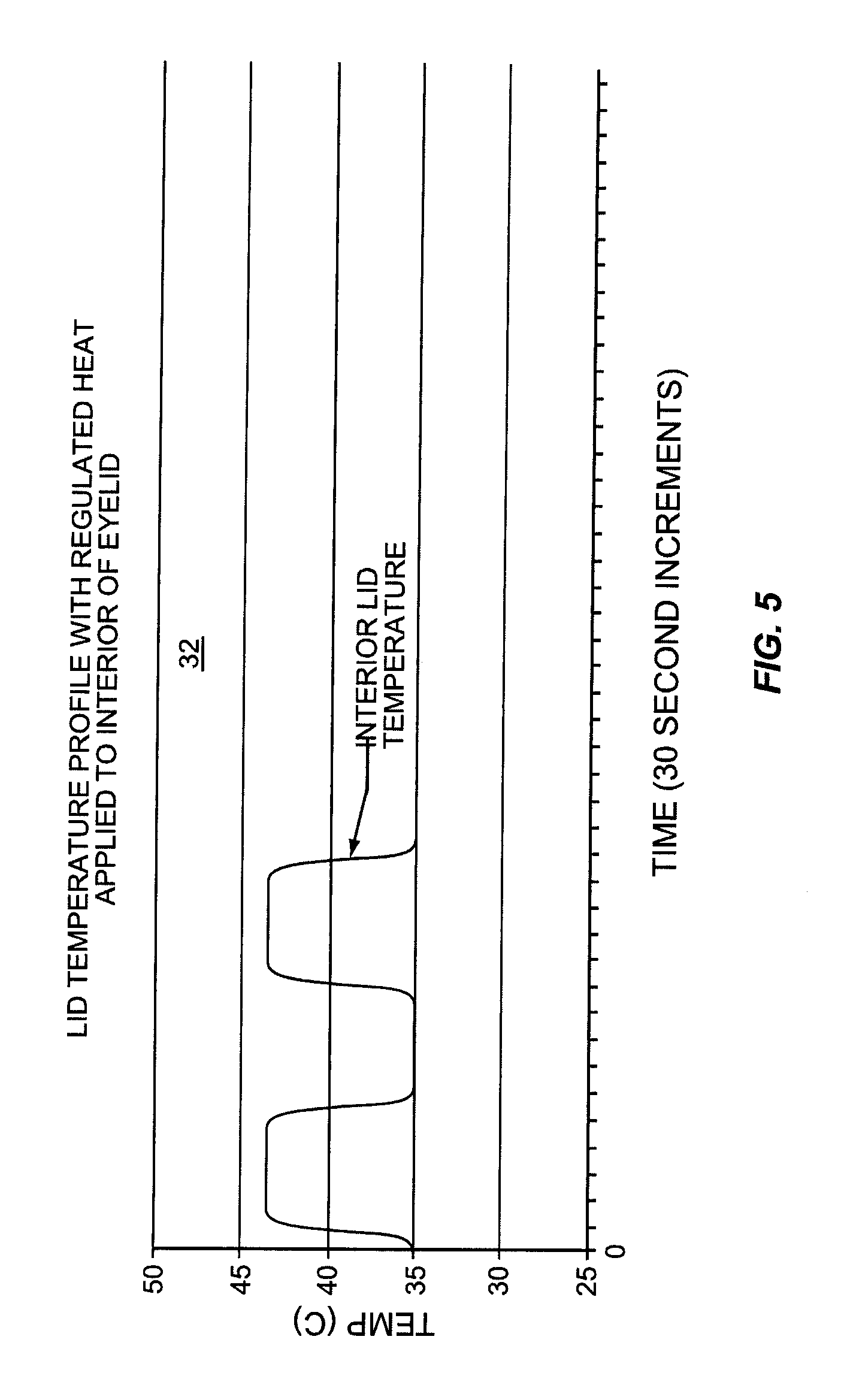Outer eyelid heat and pressure treatment for treating meibomian gland dysfunction
a meibomian gland and outer eyelid technology, applied in the field of mammalian eyes, can solve the problems of accelerated evaporation, dry eye, eye dryness, etc., and achieve the effects of shortening the time, and reducing the risk of evaporation
- Summary
- Abstract
- Description
- Claims
- Application Information
AI Technical Summary
Benefits of technology
Problems solved by technology
Method used
Image
Examples
Embodiment Construction
[0025]One embodiment of the present invention includes the breakthrough and previously unknown method of applying heat to the inner surface of the eyelid to treat dry eye caused by meibomian gland dysfunction (MGD). Applying heat to the inside of the eyelid can effectively and efficiently raise the temperature at the meibomian glands to a temperature sufficient to melt, loosen, or soften more serious occlusions or obstructions in the meibomian glands. The occlusions or obstructions can then be physically expressed to improve sebum flow from the meibomian glands to reduce evaporation of the aqueous layer.
[0026]Some patients have obstructions or occlusions in their meibomian glands that will not sufficiently melt, loosen, or soften to be expressed without attaining heightened temperatures at the meibomian glands. In many instances, these temperatures either cannot be achieved when applying heat to the outside of the eyelid, or these temperatures may be achievable, but only after apply...
PUM
| Property | Measurement | Unit |
|---|---|---|
| Temperature | aaaaa | aaaaa |
| Temperature | aaaaa | aaaaa |
| Temperature | aaaaa | aaaaa |
Abstract
Description
Claims
Application Information
 Login to View More
Login to View More - R&D
- Intellectual Property
- Life Sciences
- Materials
- Tech Scout
- Unparalleled Data Quality
- Higher Quality Content
- 60% Fewer Hallucinations
Browse by: Latest US Patents, China's latest patents, Technical Efficacy Thesaurus, Application Domain, Technology Topic, Popular Technical Reports.
© 2025 PatSnap. All rights reserved.Legal|Privacy policy|Modern Slavery Act Transparency Statement|Sitemap|About US| Contact US: help@patsnap.com



